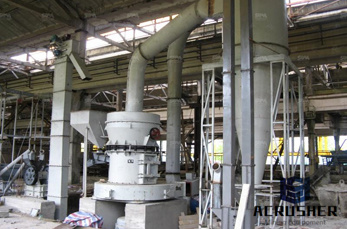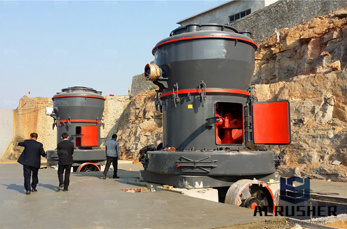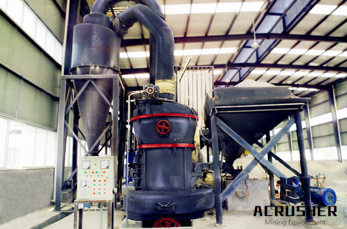Physics Chapter 6 Flashcards | Quizlet
toxic byproducts of fuel combustion, not essential for energy release; removable, in principle, through fuel processingnontoxic gases they are already a part of .
 WhatsApp)
WhatsApp)
toxic byproducts of fuel combustion, not essential for energy release; removable, in principle, through fuel processingnontoxic gases they are already a part of .

{{#badges: CoalSwarm}} Water Pollution from Coal includes negative health and environmental effects from the mining, processing, burning, and waste storage of coal, including acid mine drainage, thermal pollution from coal plants, acid rain, and contamination of groundwater, streams, rivers, and seas from heavy metals, mercury, and other toxins and pollutants found in coal ash, coal sludge ...

Trace Elements in Coal Ash Many trace elements such as chromium, arsenic, and . mercury can be toxic to humans and ecosystem functioning at relatively low concentrations, and for these reasons, state and federal institutions monitor and regulate the concentrations of many trace elements in rivers and lakes, which provide sources

remove sulfur from coal machinery remove sulfur from coal machinery 201879 · Coal mining is the process of extracting coal from the ground. Coal is valued for its energy content, and, since the 1880s, has been widely used to generate electricity. How to Remove Sulphur from Coal

Ash, an inorganic matter present in coal is amenable for dissolution using suitable reagents. Thus the dissolution of ash and its subsequent removal reduces the release of many toxic elements into the environment by coal based industries. Removal of ash also enhances the calorific value. In the present investigation an attempt has been made to reduce the ash content of raw coal obtained from ...

how to remove harmfull element in coal processing. how to remove harmfull element chemi in coal processing Home how to remove harmfull element chemi in coal processing PRODCUT how to use vibrator how much does a cubic yard of crushed rock weigh how much .

A coal preparation plant (CPP; also known as a coal handling and preparation plant (CHPP), coal handling plant, prep plant, tipple or wash plant) is a facility that washes coal of soil and rock, crushes it into graded sized chunks (sorting), stockpiles grades preparing it for transport to market, and more often than not, also loads coal into rail cars, barges, or ships.

How to Remove Sulphur from Coal The combination gravity and flotation methods demonstrate the technical feasibility of processing fine size coal to effectively remove sulfur and ash to recover high quality clean coal products which meet or exceed specifications for commercial grade coal as regards to Btu value, and ash ...

Remove Harmfull Element Chemi Coal Processing. how to remove harmfull element chemi in coal processing. Home » how to remove harmfull element chemi in coal processing. Coal: A Complex Natural Resource USGS Publications. be learned about the harmful attributes of coal and how they may be removed, modified, ..

Mercury is a highly toxic element commonly found in coal and municipal waste. Wet scrubbers are only effective for removal of soluble mercury species, such as oxidized mercury, Hg 2+. Mercury vapor in its elemental form, Hg 0, is insoluble in the scrubber slurry and not removed.

(SEs) help remove tramp iron from conveyor lines, while metal detectors are sensitive to ferrous and nonferrous metals and are built for use in rugged environments. What follows is the type of magnetic separation equipment commonly used, and how it works to remove harmful foreign metal objects from coal.

Coal focuses on the research and development needs and priorities in the areas of coal resource and reserve assessments, coal mining and processing, transportation of coal and coal products, and coal . Get Price; Coal processing CSIRO. This research aims to provide coal producers with the tools to optimise coalprocessing techniques for ...

how to remove harmfull element in coal processing ... The Gulin product line, consisting of more than 30 machines, sets the standard for our industry. We plan to help you meet your needs with our equipment, with our distribution and product support system, and .

Jul 08, 2015· Science breaks new ground in converting coal ash from pollutant to useful products ... high sulphate levels and numerous other toxic elements such as ... ash can be used to remove toxic .

Recommendation: There should be renewed support for advanced coal mining and processing research and development to optimize use of the nation''s coal resources by increasing the amount of coal that is economically minable through technological advances .

Reusing coal ash as structural fill leaves the coal ash unchanged and in a loose form that is more likely to leach toxins when exposed to water. Using coal ash to make concrete is one way to physically change the coal ash and encapsulate the toxic elements while creating a valuable material.

Trace elements, such as, iron, manganese, zinc, copper, lead, nickel, chromium, cobalt, arsenic, cadmium, and mercury, can be found at higher concentrations compared to bottom ash and the parent coal. Fly ash can leach toxic constituents that can be anywhere from one hundred to one thousand times greater than the federal standard for drinking ...

Jan 28, 2013· The mining of rare earth metals, used in everything from smart phones to wind turbines, has long been dominated by China. But as mining of these key elements spreads to countries like Malaysia and Brazil, scientists warn of the dangers of the toxic and radioactive waste generated by the mines and processing plants.

ABSTRACT In this task, a list of specifically identified, poten tially hazardous materials which may be associated with the air, water, and solid waste from a refinery, a coke plant, a Lurgihigh Btu gas process, and the solvent refined coal process was compiled.

Coal Cleaning Process Description12,9 Coal cleaning is a process by which impurities such as sulfur, ash, and rock are removed from coal to upgrade its value. Coal cleaning processes are categorized as either physical cleaning or chemical cleaning. Physical coal cleaning processes, the mechanical separation of coal from its

In order to monitor Potentially Toxic Elements (PTEs) in anthropogenic soils on brown coal mining dumpsites, a large number of samples and cumbersome, timeconsuming laboratory measurements are .

(SEs) help remove tramp iron from conveyor lines, while metal detectors are sensitive to ferrous and nonferrous metals and are built for use in rugged environments. What follows is the type of magnetic separation equipment commonly used, and how it works to remove harmful foreign metal objects from coal.

Oct 18, 2019· Coal fly ash as well as hierarchical X can be used as catalysts in biodiesel production, significantly lowering processing temperatures and other costs. Zeolites A and NaP made from fly ash can be used to remove toxic metals from heavily polluted water. Zeolite A can be used for gas purification and separation.

Coal is a black or brownishblack sedimentary rock that can be burned for fuel and used to generate is composed mostly of carbon and hydrocarbons, which contain energy that can be released through combustion (burning). Coal is the largest source of energy for generating electricity in the world, and the most abundant fossil fuel in the United States.
 WhatsApp)
WhatsApp)